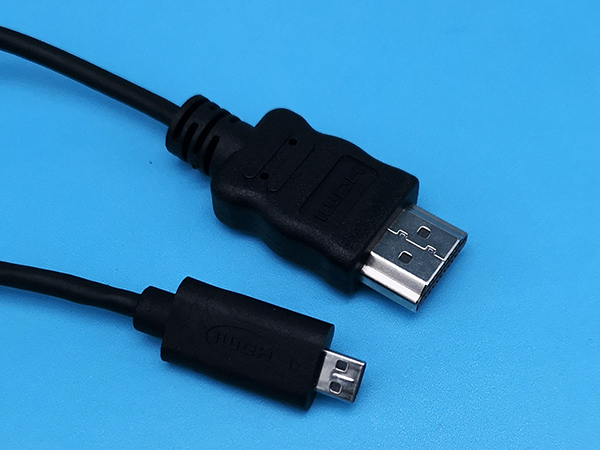- Ben Kai·Over a decade of focus on customizing data transmission lines
- HD data cable Connecting the data cable Equipment data cable

In April 2002, seven companies, including Hitachi, Panasonic, Philips, Silicon Image, Sony, Thomson, and Toshiba, jointly established the HDMI High Definition Multimedia Interface Organization HDMI Founders (HDMI Forum) to begin developing a new digital video/audio interface technology that meets the standards of the high-definition era. After more than half a year of preparation work, HDMI Founders officially released the HDMI 1.0 standard on December 9, 2002, marking the official entry of HDMI technology into the historical stage
The launch of HDMI technology is not an impulsive behavior of these manufacturers, on the contrary, there are more deep-seated reasons behind the launch of HDMI technology. In April 1999, in order to meet the requirements of high-quality graphics and images in the digital era, the DDWG (Digital Display Working Group) digital display working group launched an interface called DVI (Digital Visual Interface) based on the patented technology of Silicon Image Company in the United States, aiming to unify the digital display interface standards of the new era. This technology has also received widespread support from many large enterprises in the IT industry, including Intel, Dell, HP, IBM, Microsoft, and others. After more than three years of promotion, DVI technology has been rapidly applied in the field of computer display output. However, with the development of digital high-definition audio and video technology, DVI interfaces have gradually exposed various problems and even become a bottleneck in the progress of digital imaging technology to some extent
The main issues with DVI interfaces include:
*The DVI interface is considered for PCs, and its compatibility with flat screen TVs is average
*The DVI interface lacks support for image copyright protection
*The DVI interface only supports 8-bit RGB signal transmission and cannot provide optimal performance for wide color gamut display terminals
*Due to compatibility considerations, the DVI interface has reserved many pins to support analog devices, resulting in a large interface volume and low efficiency
*The DVI interface can only transmit image signals, and the support for digital audio signals is completely disregarded
Due to the above shortcomings, DVI interfaces are no longer able to better meet the development needs of the entire industry. Therefore, whether it is IT manufacturers, tablet TV manufacturers, or numerous publishers in Hollywood, there is an urgent need for a better interface technology that can meet the future development of the high-definition video industry. It is precisely for these reasons that the HDMI standard was born
Normative identification
On March 4, 2010, HDMI Licensing, LLC released HDMI specification version 1.4a on behalf of original HDMI development members, which features key enhancements for 3D applications, the addition of mandatory 3D formats for broadcast content, and a 3D format called Top and Bottom
Due to the fact that the term "HDMI 1.4" is too broad to display the specific supported technology of the device, the use of version number identification methods such as "HDMI version 1.4" is completely prohibited in this specification. According to the newly released "Trademark and Logo Usage Guidelines", HDMI cable manufacturers are prohibited from using version number identification when selling and promoting HDMI version 1.4 standard cables from now on. For old versions of cables, all labels, instructions, packaging, etc. marked with version numbers should be removed within one year
HDMI devices other than cables should have all version number markings removed before January 1, 2012. Prior to this, manufacturers should apply version number identification on the premise of clearly displaying the technology used, such as "HDMI v.1.4 with Audio Return Channel and HDMI Ethernet Channel", but it is strictly prohibited to use general "HDMI v.1.4 compliant" (compatible with HDMI 1.4)
Chinese standard name
There are 5 types of HDMI version 1.4 cables, and in the future, the standardized identification methods will be: Standard HDMI Cable Chinese specification name: Standard HDMI Cable (up to 1080/60i)
Standard HDMI Cable with Ethernet Standard Automotive HDMI Cable High Speed HDMI Cable (supports 1080p, DeepColor, 3D)
High Speed HDMI Cable with Ethernet